Story by Chris Hector & Ute Raabe , and Photos by Julia Rau & Susan Mackenzie
Ingrid Klimke has built her philosophy of training her horses on the foundation established by her father, the late Reiner Klimke, who like Ingrid was an international star in both eventing and dressage. Not surprisingly, it is a ‘horse friendly’ way of training based firmly on the classical principles:
“It is important that you do a variety of things when you are training an eventer, that means you never do two training sessions the same in a row. Maybe you will do two dressage sessions in a row, but then you might start the session by working your horse over cavaletti. Once or twice a week you jump – either you do gymnastics or cavaletti work or you do some jumping exercises from the cross-country course, like training over narrow jumps in the arena. Make sure you work always on getting your horse supple and loose.”
“I do a lot of cavaletti work also with my dressage horses because then I can really make them active behind, over the back, stretching into your hand, and really supple in the back.”
“Once a week I go to the hills, every five to seven days, the hills make them fitter.”
Do you think your program for training the horses is very different from your father’s program?
“My father was only riding dressage when I grew up, he had stopped eventing, but he definitely always had his cavaletti alongside his dressage arena, he always had his racetrack (many German trainers have long well-surfaced sand tracks around their working areas) around the dressage arena , and always said, first go on the racetrack and warm up your horse, then come into the dressage arena. We also went for hacks, he would make sure when a horse was tense and with a problem in walk, he would say – first thing, you go for a hack. You go, for one or two hours, just go with your horse, outside, and enjoy it. Then the horse would walk because he was relaxed.”
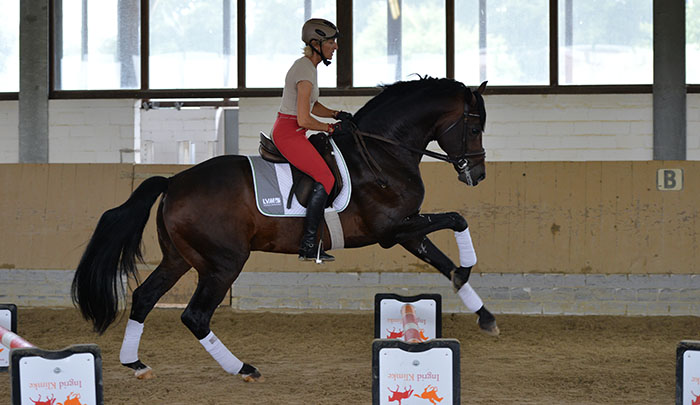
“I grew up with cavaletti, the cavaletti were always there, not only for jumping and gymnastics, but to teach the horse more cadence, and to strengthen the muscles – you can find muscles with cavaletti that you cannot develop without using them. If you want to improve the quality of the gaits, then cavaletti are the way to reach these muscles.”
“I don’t have the old fashioned cross on my cavalettis, because with the cross, either wood or metal, the horse can hurt himself, especially when they are young and not used to the cavaletti. What I like is to use is plastic for the stands, but what is important is that the pole is still wood, because the horse should react when it touches the pole, the horse must feel it so it can learn from it.”
Has your training changed very much under the influence of Christopher Bartle?
“Oh yes, definitely, because Christopher is like my father was, he is always thinking. He has really helped me, I love to work with him in all the disciplines. He has the same philosophy in all disciplines, he tries to think like a horse, understand the horse, to always find a way that the horse can understand you. Everything he does is in a horsemanship way, it is understanding and trusting your partner, the horse. It is totally fair, and always intelligent. He is always finding intelligent solutions to problems, and he is always flexible enough to say, let’s try this, let’s try that, but he never loses the classical way.”
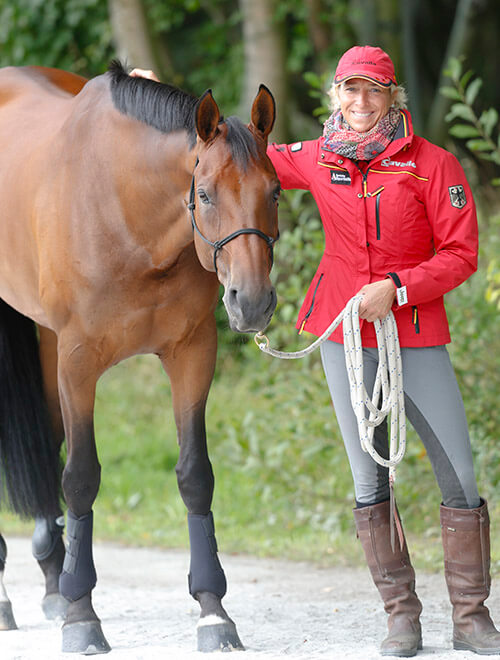
It must be very different riding your mare, Escada, from riding Abraxxas? They are such different styles of horses…
“Totally different, absolutely – you have to really change your approach. If you have ten horses, you have ten different horses, every rider has to think and be flexible and first of all understand the personality of the horse. What is the best way to approach this horse’s mind? The mind is the most important thing. If the horse is working with you, with an open mind and trying to give its all, then you have the chance to really improve the way that horse goes – but if you don’t find the clue to the horse’s mind, then the horse will never give its all for you in the partnership.”
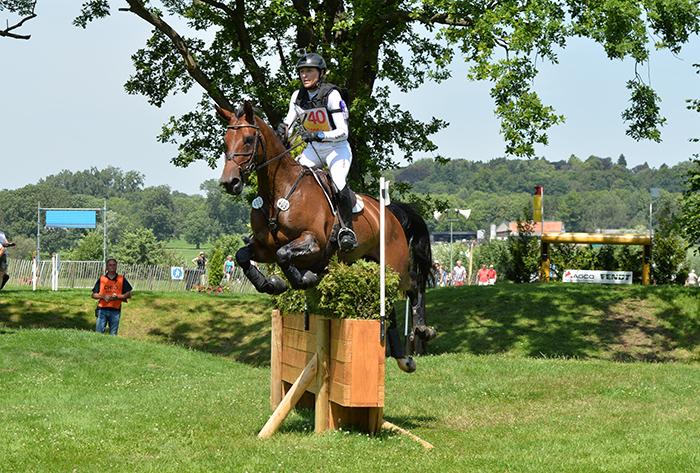
Escada and Ingrid at Aachen
What is the key to Escada?
“The key to Escada is to learn to be very patient, to patiently repeat, and make sure that she stays with you. She is very determined, she is very strong willed, she knows she is full of scope and can do everything – she is a typical mare. I know it, and I want to do it my way: If I want to start my change, I start my change. You can go with me or forget it. I had to explain to her, if we are partners, we both have to listen. I can’t only listen to her, because we can’t only do it her way. The clue was patience and repetition. Again and again and again, Take her to another dressage arena, and ride another M dressage test – not very exciting – boring for me, and finally, boring for her too, but she had to accept, we go into the dressage arena, we do our test and then very confidently and quietly, we go home. Next day, we start it again, and then go home… finally she agreed.”
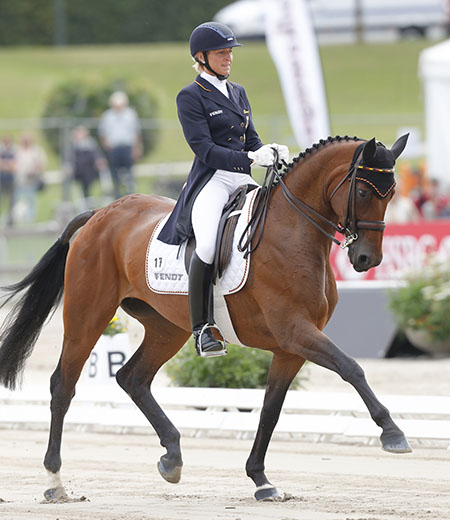
Ingrid is possibly the most versatile of Germany’s top trainers – she is a teacher, dressage rider and coach to Grand Prix level, eventing rider, Olympic gold medalist and World Champion, multiple German champion, book author, you name it. In the German PM-Forum magazine she shares some of her cavaletti training tips:
BASIC RULES
– Get your horse used to cavaletti work gradually, ride over a single cavaletti first, then two, then three and eventually four.
– Don’t use more than four in a row because if your horse gets into trouble or its legs tangled up, it will still be able so save itself with a quick jump out. Otherwise you risk injury or losing your horse’s confidence.
– Know your lines: start with cavaletti set up in a straight line, then arrange them on a curved line for trot and canter work. It will have an increased gymnastic effect.
– Wooden poles are always the preferred option, they have the right weight and don’t clatter when knocked.
– Avoid just placing poles on the ground, they can move when knocked and get between the horse’s feet.
– Train regularly, not just once a month, or you risk overstrain and muscle soreness.
– Include cavaletti work two to four times a week, also once on the lungeing rein.
THE RIGHT SET-UP
– The correct distances are very important: for walk, 0.8-0.9 meters; for trot work, 1.2-1.3 meters; for canter work, 3 meters
– More tightly placed cavalettis will require the horse to step shorter, go more elevated and collected.
– Wider placed cavalettis will increase forward movement from the shoulder.
– Try a curved line for canter and trot work. Place your cavalettis fan-shaped on the circle, for trot with a distance of 1.2 meters, for canter use a distance of 2 meters on the inside line, 3 meters on the outside.
– Now you can work on either collected or extended paces without changing your setup, just by varying between the outside and the inside lines.
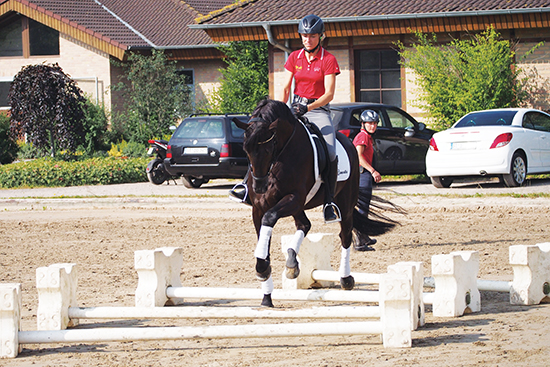 Tip 1: Activate the hindleg more
Tip 1: Activate the hindleg more
First trot over your cavalettis, then transition to canter, ride a circle and turn towards the cavalettis again, transition back to trot and over the cavalettis. Repeat in rising or sitting trot. This combination of trot-canter transitions will help your horse to increase activity of the back, step under with the hindleg and improve contact through the reins.
Tip 2: Develop your collected walk
Set up four cavalettis and use them in combination with walk pirouettes, first on the track, then on an open line. Ride in collected walk over the cavalettis, then a half pirouette in walk, back over the cavalettis, follow with another half pirouette. Your horse will learn to keep a fluent rhythmical movement and lift its leg, even in the pirouettes.
Tip 3: Improve the simple change
Canter in a ten-meter figure of eight, make sure that you do the walking part of the simple leg change over the four cavalettis.
Tip 4: For young horses
Set up four cavalettis in a row, but like this: cavaletti, cavaletti, gap, cavaletti, cavaletti, so you have one in-between step without a cavaletti. Horses will have to pay special attention to this in-between step. It is always an interesting exercise, you can see how clever some horses are and how careful and willing to learn they can be.
Cavaletti work not only helps the horse with improving cadence, rhythm, self-carriage and motivation, it also helps the rider. You have to focus, find the right speed and the correct line.
This article originally appeared in the February 2014 issue of THM.


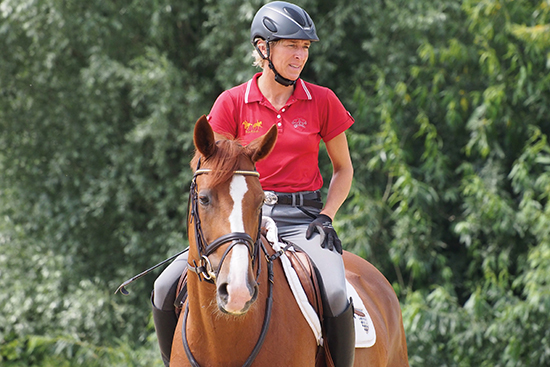
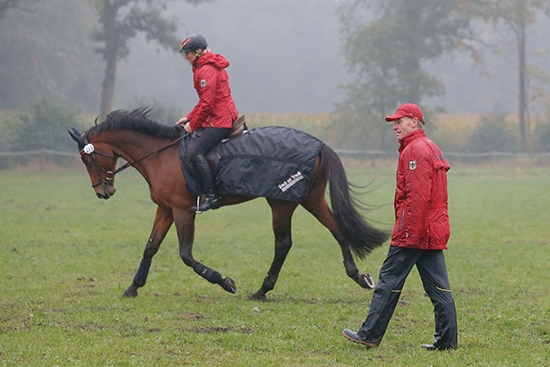
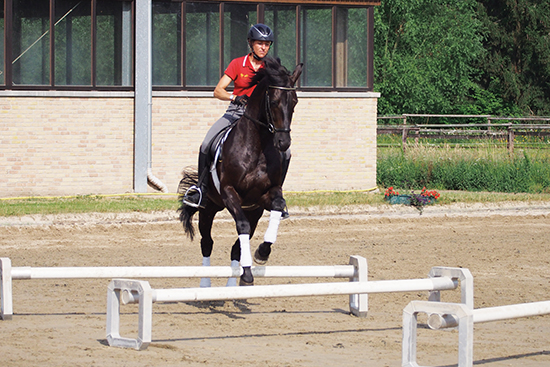
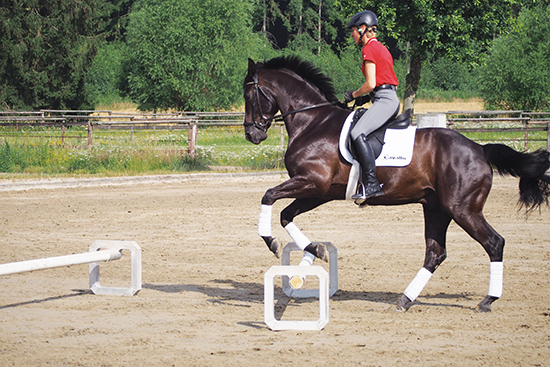
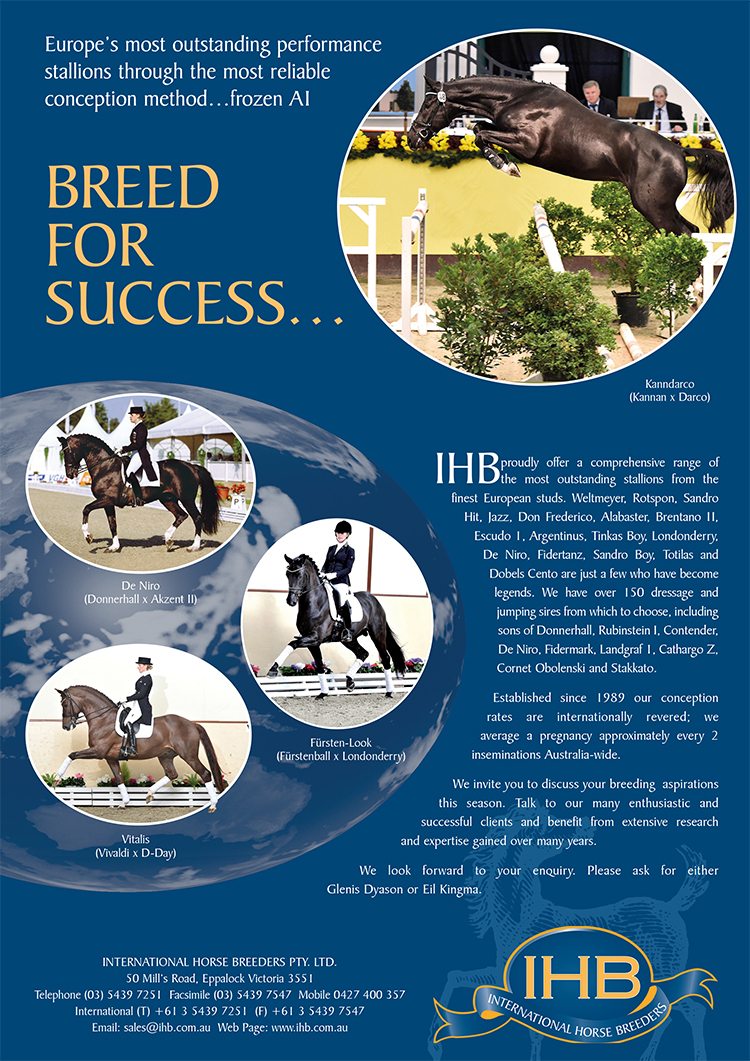
One thought on “Ingrid Klimke talks about Training…”
Comments are closed.